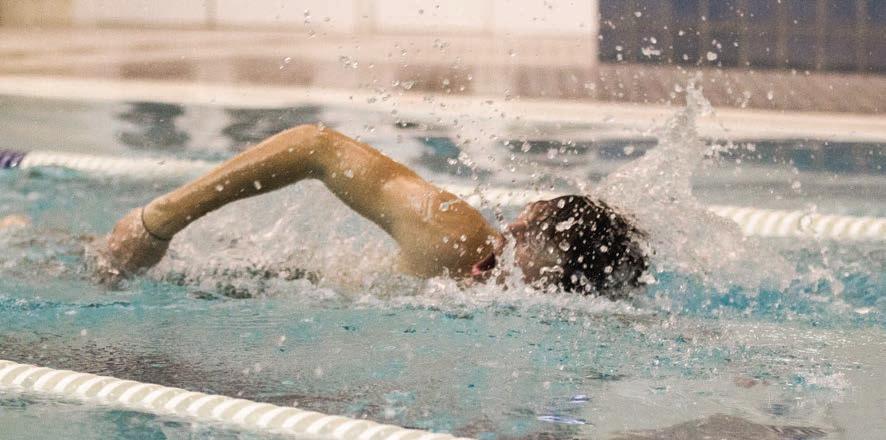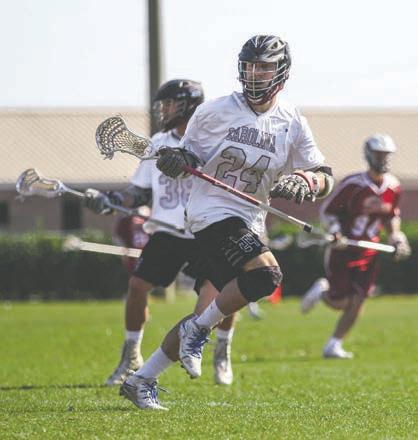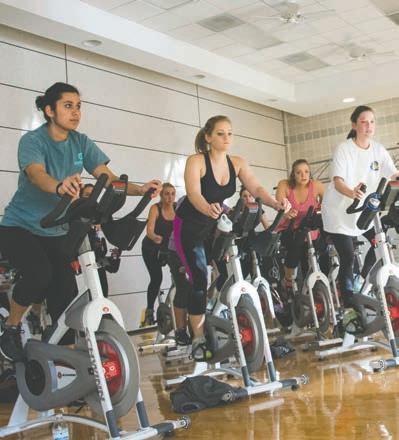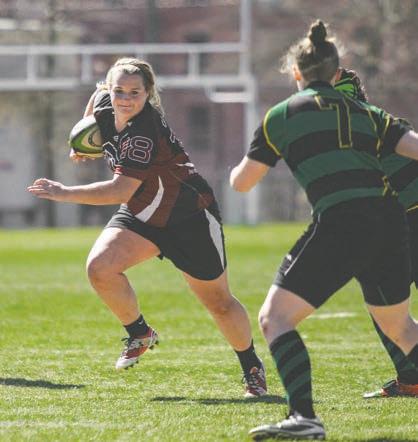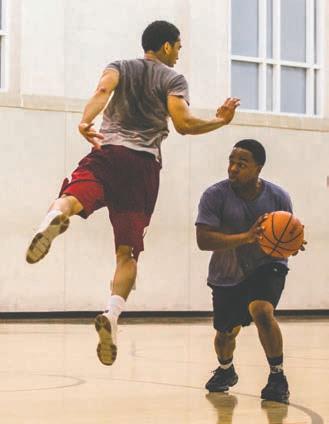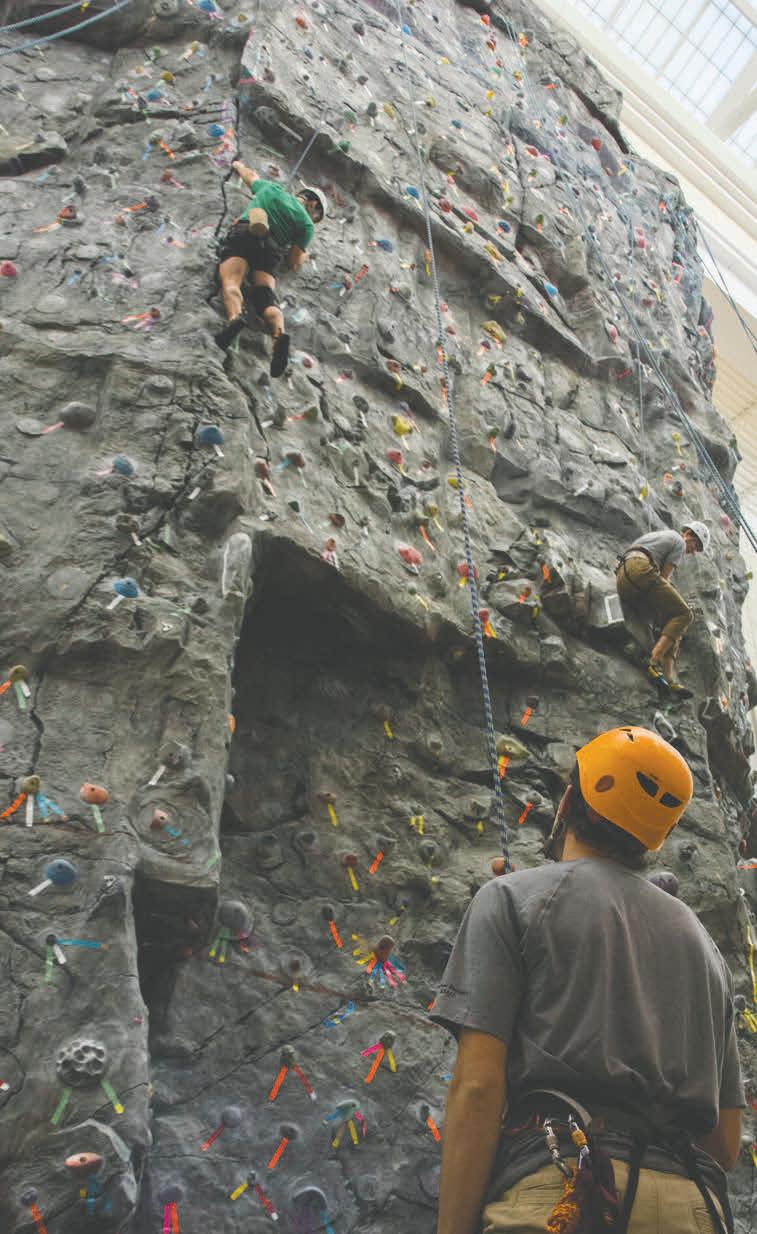Tacos
Columbia's hottest & spiciest spots
QUIZ: WHERE WILL YOU SPEND FINALS?
JUST BREATHE SURVIVING CROSSFIT
ATH •LEI •SURE from the classroom to the courts

Tacos
Columbia's hottest & spiciest spots
QUIZ: WHERE WILL YOU SPEND FINALS?
ATH •LEI •SURE from the classroom to the courts


The reality of collegiate mental illness


This
DEFYING CONVENTIONS: NONTRADITIONAL STUDENTS
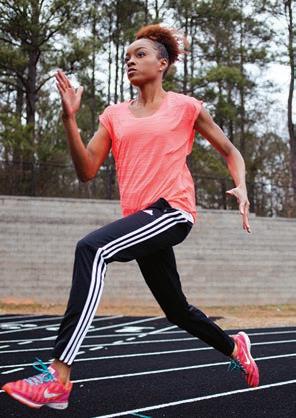

CHEMICAL REACTIONS: THE REALITY OF MENTAL HEALTH IN COLLEGE

SPEAKING UP: REPORTING ASSAULT ON A COLLEGE CAMPUS
Columbia tacos: from authentic to eccentric
Pull out your bendy straws.

When keeping sane and sanitary becomes too much.
45 QUIZ
Will you be spending finals in the fetal position?
46
"Did she wear makeup to the gym?"
EDITOR-IN-CHIEF
ERIKA RYAN
CREATIVE DIRECTOR
LINA LeGARE
MANAGING EDITOR
KENDRA LITTLE
ARTICLES EDITOR
JAKE MARGLE
ASSISTANT ARTICLES EDITOR
KASEY MEREDITH
COPY CHIEF
MADELEINE VATH
ASSOCIATE COPY EDITOR
RICHARD LIPKIN
STAFF WRITER
HANNAH JEFFREY
CONTRIBUTING WRITERS
LAURA ALLEN
MIKAELLA ANTONIO
MEAGAN BLAKESLEY
SAMANTHA ESCE
KATHERINE FINNEY
DIRECTOR OF STUDENT MEDIA
SARAH SCARBOROUGH
CREATIVE DIRECTOR
EDGAR SANTANA
PRODUCTION MANAGER
DEGAN CHEEK
BUSINESS MANAGER
KRISTINE CAPPS
LAUREN GALIDA
K. LEE GRAHAM
LUKE HAVENS
ROBIN HENDRICKS
CHELSIE KELLY
ZOE NICHOLSON
KATHLEEN SCHIPANO
KELLY YOON
ART DIRECTOR
KODY KRATZER
STAFF DESIGNERS
KELLEN LaGROON
STEPHANIE ORR
BRITTANY WILT
CONTRIBUTING DESIGNERS
WESLEY JEFFERIES
SYDNEY PITVOREC
ALLY WILLARD
PHOTO EDITOR
HANNAH CLEAVELAND
ASSISTANT PHOTO EDITOR
JOSH THOMPSON
SENIOR PHOTOGRAPHER
BRENNAN BOOKER
FACULTY ADVISER
SCOTT FARRAND
CREATIVE SERVICES
BRANDON BRAZELL
RANNAH DERRICK
WANDA FELSENHARDT
KODY KRATZER
LINA LeGARE
CHARLOTTE PRICE
Advertising: (803) 777-3018
CONTRIBUTING PHOTOGRAPHERS
MIKAELLA ANTONIO
ALYX COPLEY
KAMILA MELKO
VIDEOGRAPHERS
KYLE HAYDEN
JAY LUEBKE
WEB EDITOR
KATHERINE FINNEY
ASSISTANT WEB EDITOR
ROBIN HENDRICKS
PUBLIC RELATIONS & EVENTS DIRECTOR
ALYSON RUSSO
PUBLIC RELATIONS ASSISTANT
KRISTIE WAKEFIELD
SHAYE GULOTTA
JESSICA GORMAN
CAT SULLIVAN
STYLE EDITOR
LINDSAY RIGGINS
STYLE ASSISTANT
DOMINIC BELLOTTI
STUDENT ADVERTISING MANAGER
NICK VOGT
ADVERTISING REPRESENTATIVES
JOSH DAVISON
COLE HALTOM
LOWMAN HARLEY
MARYAN TEHRANIE
AMANDA GRANT
To contact G&B, email sagandbe@mailbox.sc.edu or visit www.gandbmagazine.com
Garnet & Black magazine is produced four times a year by students of the University of South Carolina and is distributed for free to members of the university community. All editors and staff members can be contacted at (803) 777-1149. The office is located in Russell House room 339. Email letters to the editor to sagandbe@mailbox.sc.edu or to Garnet & Black magazine, Student Media, 1400 Greene Street, Columbia, SC 29208. Letters should be 250-400 words and must include name, address, phone number and academic information (if applicable). Garnet & Black reserves the right to edit for libel, style and space. Anonymous letters will not be published.
INDIE GRITS FESTIVAL
April 14 -17
Free Admission, VIP passes $200
Indie Grits has become an integral part of Columbia’s arts and culture scene since its inception in 2007. Big Freedia, New Madrid and TOMBOi are just a few of the musical acts that will be playing the festival, and feature and short films will make their debut over the course of the threeday festival.
CLOTHED IN HOPE 5 YEAR
Alyx Copley is a first-year business student from Wilmington, North Carolina. She enjoys photography, food and the beach. She is currently combining two of those loves to create a visual cookbook. Her dream job would be working for Bon Appetit Magazine contributing to both the creative and business side. Take a look at her photos for On The Air on page 41.
Sydney Pitvorec is a first-year visual communications student with a passion for design and travel. She began designing for her high school yearbook, of which she was the editor, and has loved it ever since. Her dream job is to one day combine both of her passions and design layouts for a travel magazine. Check out her design for Artist in Residence on page 38.
ByFarr Graphic Design Studio
April 21 // 6 - 8 p.m.
Free Admission
Clothed in Hope empowers women n Zambia through education and economic opportunity, with a focus on life-skills training, sewing, entrepreneurship, marketing and selling the clothes and accessories they make. Come out to see the Spring 2016 collection made by the women Clothed in Hope supports.

SOUTH CAROLINA FOOD TRUCK AND CRAFT BEER FESTIVAL
South Carolina State Fairgrounds
April 30 // 11 a.m. - 7 p.m.
General Admission $5 in advance
The Food Truck Festivals of America will host South Carolina's second annual Food Truck and Craft Beer Festival at the State Fairgrounds. There will be more than 20 food trucks present as well as music and live entertainment. Tickets are $5 ahead of time but $10 the day of.
KATHLEEN SCHIPANO
Kathleen Schipano is a third-year mass communications student with a minor in women's and gender studies who loves writing and making people smile. She spends her time as a mentor to female first-year students and doing service with her sisters in Omega Phi Alpha. She hopes to one day make people smile full-time by managing communications for any body-positive, pro-woman organization. Make sure to take the quiz she wrote on page 45.
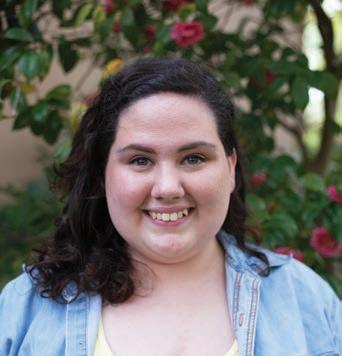
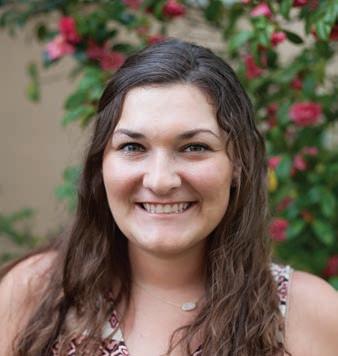
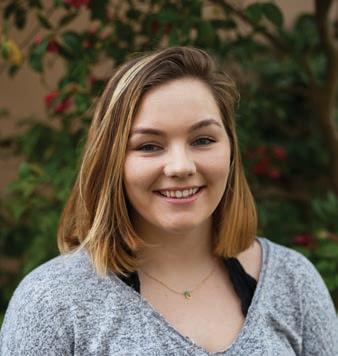
Tyson Blanton is a third-year public relations student with a minor in graphic design. She works for media relations at the USC athletic department and as a lifeguard at Strom. Blanton has a passion for sports fueling her dream to work for a professional sports team. Blanton is a part of Garnet & Black’s public relations team.
RHYTHM AND BLOOMS
Riverbanks Zoo & Gardens
May 5 // 6 - 9 p.m.
General Admission $5
Sing and dance your way through the zoo at the first Rhythm and Blooms event of 2016! Enjoy live music by 8 Track Parade in the Botanical Garden 1 public. Riverbank Zoo hosts Rhythms and Blooms every Thursday evening in May with a different live entertainment subject each week.
Plenty of people say they can’t get work done in their apartment because it feels too comfortable. I recently realized that’s how I’ve become with my desk in the G&B office. Student media has been my home for the last three years.
I came into this job starry-eyed. I got my start at The Daily Gamecock and started here as the Editor-in-Chief. During the summer, I was flooded with names of the people who would be my future staff. Of the 18 people, I knew three of them personally.
Somehow this group of strangers ended up being some of the most talented people I’ve ever met, and they also became some of my best friends. Many of us came in unaware of what our contributions to the magazine would look like, yet we put out four issues that we’re extremely proud of.
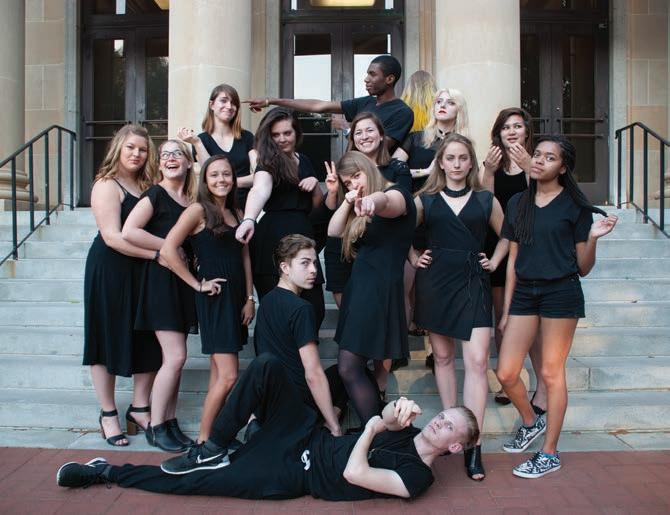
Heading up Garnet & Black has taught me things a class never could. Classes may teach you how to write, but they don’t teach
you to put together a 48-page magazine in a few weeks.
I’ve spent countless long nights in that office. I’ve napped on that carpet. We've joked around a lot, but throughout this year, we have done plenty of work I am extremely proud of.
For this issue, we’re shedding light on some common issues that are typically told in a different way. Normally when discussing sexual assault, we don’t discuss the steps that come afterward. Hannah Jeffrey’s feature Speaking Up gives the options a survivor has if they decide to come forward. When discussing collegiate mental illness, people rarely talk about how few students actually reach out for the help that they need; my feature Chemical Reactions talks about why.
Stigmas exists because we don’t address the issue because we’re uncomfortable. What we don’t realize is that by overlooking these issues, we don’t want to admit they affect so many
of us perpetuating the problem. The more we inform ourselves, the better equipped we are to deal with the problems people around us are facing.
You may have noticed neither Chemical Reactions nor Speaking Up include a firsthand account — this was on purpose. Stories like these don’t need to be personified, because either could be affecting countless people passing through our campus.
For our final issue, I am glad that we’re ending the year by filling this gap of conversation. As a writer, it’s empowering to know that I’m ending my term here as Editor-in-Chief by bringing unspoken issues into the spotlight.
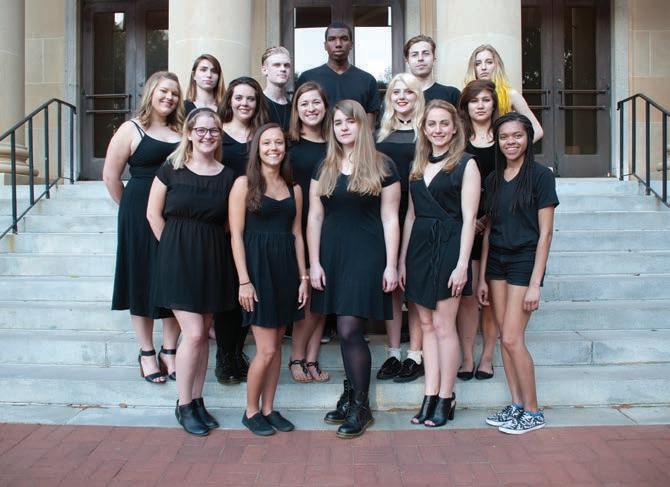

To most, staying balanced means juggling classes and friends. To Austin Ring, it’s a lifestyle that represents so much more.
“All of my hobbies tend to revolve around balance,” says the fourth-year physics student who practices rock stacking, skating, slacklining and most notably, kendama.
For those unfamiliar with kendama, Ring describes it as, “an old Japanese game that is essentially ball-in-cup on steroids.”
He discovered the game back in 2011 through his passion for filming skate videos and other unique tricks, and he’s been practicing ever since. He has since won a sponsorship contest hosted by the Minnesota-based company, Sweets Kendamas.
Still, he confesses that playing the game is no walk in the park, as there are countless tricks to earn, and even the type of paint used on the ball can affect the difficulty level. He’s found a great sense of community with other players.
“Everyone hopes to see everyone else hit whatever trick it is they’re trying to land,” Ring says. “It’s a big pool of positive vibes.”
In addition to playing with the kendama, Ring has also ventured into the kendama marketplace by customizing his own.
He can also be found slacklining on the Horeseshoe. The sport is similar to tightrope walking and, not surprisingly, is extremely difficult as well. Since mastering walking on the line, he has been able to practice tricks as well.
Ring says it’s all about dedication.
“To be truly comfortable with yourself on the line so that you can start doing more than just walking takes a serious amount of work,” he says.
Like kendama, Ring has been honing his slacklining skills for five or six years. While many of us lose track of our high school hobbies, he’s made sure to find time to practice and edit videos of his kendama and slacklining tricks alongside classes and his involvement with the Mountaineering and Whitewater Rafting Club. It takes effort to maintain these skills, but Ring has proven his ability to cultivate his talent and conquer new challenges presented by his hobbies with a great deal of persistence and a truly adventurous spirit.
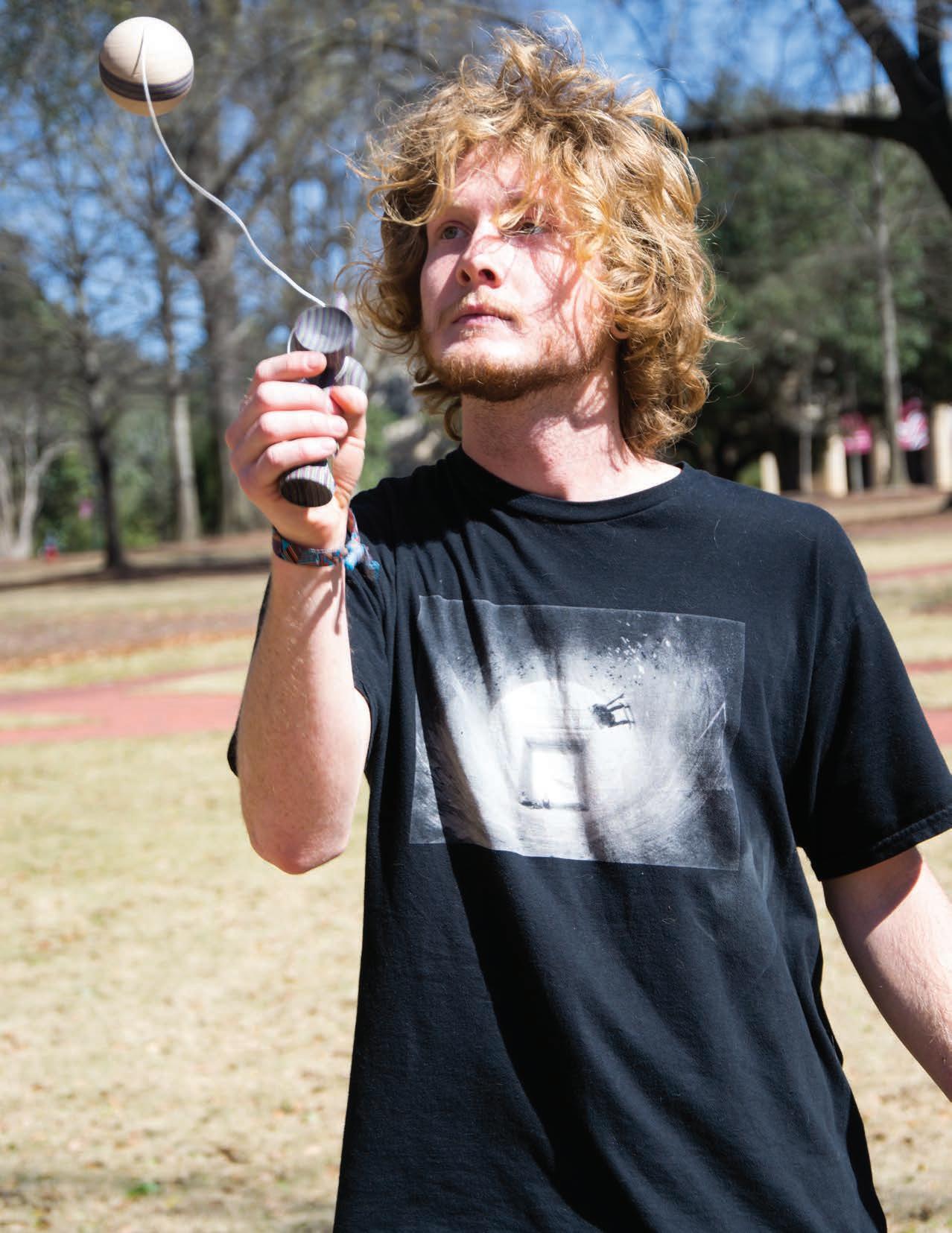
From her childhood aspirations of becoming a rapper to participating in speech and debate in high school, Francine Tamakloe, a fourth-year marketing and entrepreneurship student, has always been expressing herself through words. It was when she was introduced to a TV show called "Brave New Voices" in early high school where she discovered the world of spoken-word poetry and soon began performing recitations of people’s works.
In her first year at USC, Tamakloe performed her first self-written poem about domestic violence in front of a packed Russell House Ballroom at the 2012 Fashion Defined fashion show.
“That was a very interesting first try," Tamakloe says. "Most people, when they first do spoken word, warm up by going to an open mike first; I just threw myself out there.”
She continued to actively pursue poetry throughout her first year of college, participating in Carolina Production's poetry slams and open mic nights. Tamakloe noticed there was no student organization dedicated solely to poetry. So, she started her own.

In fall 2013, First Word Epiphany, a collective of student poets, was formed.
“Poetry is definitely something in which you find a lot of community," she says. "Poetry slams can get really competitive, but I can’t say that there’s anything but love in the room.”
The members of First Word Epiphany are brought together by poetry, despite their many differences.
“We are a very tight-knit group, but we are all very different. I don’t know if outside of poetry most of us would have been together the way we are now,” Tamakloe says.
To Tamakloe, one of the most rewarding experiences of running a spoken word poetry group is seeing its members develop. Many members had never performed their poetry before, but now engage in showcases at Russell House and special event performances.
“As much as I love to do poetry, I think my real ability lies in creating a group and developing that talent," Tamakloe says. "I’m proud of my own work, but the growth I’ve seen in the members of First Word Epiphany way surpasses that.”

I’m the opposite of your typical gamer. I have extensive history with "Just Dance," and my “Crazy in Love” performances would make even Beyoncé weep. I’ve played a few rounds of "Angry Birds," but I’ve never liked video games. As a kid, I never won a round of "Mario Kart" against my little brother, nor did I understand the appeal of sitting and playing a virtual game. I was just never in my element.
So, when I was told I would be attending the USC Gaming Club for a night, I was a bit wary and, honestly, not thrilled. When I walked into the Swearingen room where the gaming club meets, I was actually nervous. Normally, I do fairly well in social situations where I don’t know anyone, but because everyone was playing games or engrossed in conversations regarding games, I knew my usual small talk and banter couldn’t help me break the ice. I would just have to dive right in.
For a few minutes I wandered around aimlessly and took everything in. There were a few different consoles set up around the room, but I headed straight for the big projector at the front where several people were playing some kind of fighting game simultaneously. I soon found out that the name of this game was “Super Smash Bros." and got a quick run down of how to play.
A very nice guy explained to me what all the buttons on the controller do, but I forgot as soon as he explained them.

As far as my game strategy, I mostly pressed as many random buttons as quickly as I could until I died. At one point I discovered how to make my character walk, so I moved myself to a corner of the screen and tried to just hang there, hoping that everyone would forget me. It probably came to no surprise I was the first one eliminated from every round.
Probably the lowest point of the game was when a giant pink gorilla pummeled me over and over until I fell off the little island I was standing on. It was strangely depressing, possibly because it felt like foreshadowing for how midterms were going to kill me that week. Yes, I got to the point where I was drawing metaphors between the video game and life. This was the point that I gave up altogether and handed off my rights to play.
Overall, my experience with the USC Gaming Club reaffirmed the fact that I am terrible at video games. The club did leave me with a great impression of the diversity of our campus though, and everyone was extremely nice and welcoming.
It proved to me that whatever your hobby is on campus, there’s a community here for you. Whether it’s playing "Dungeons & Dragons," or obsessing over the latest fashion collection from Dolce & Gabbana, there’s a group of people here that share your interests. And while I probably fit more into the latter category, it was nice to see what other people are passionate about and to share that experience for awhile, even if it meant dying at the hands of a giant pink gorilla.
When shopping for a new apartment, most people focus on the essentials: couches, beds, chairs and tables. Those are necessary for any living space to be functional, but it’s the little things that make a new place a home. Home decor is not only decoration; it’s self-expression. These are products to help you express yourself through sound, whether you love jamming to oldies, headbanging or relaxing to the soft cadence of nature.


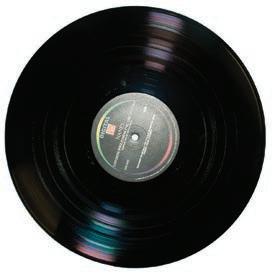

Record players are ideal for someone who wants to go back to the basics, but also likes staying up to date with today’s latest albums. Most new releases are made into vinyl and can either be the beginning of a new or old collection. Whether it rests on a corner table or on display in the center of the room, the vintage look and sound will create a sense of sophistication in the space. Record players can be found at Urban Outfitters, which has turntables as well.
Headphones are an absolute necessity, especially for people who live with roommates. Earbuds work just as well when you’re trying to not disturb a roommate, but over-ear headphones — especially noise-canceling ones — really do make it seem like you’re in your own little world. The sound is so much cleaner as well, whether you’re watching YouTube videos or listening to music. Headphones can be found in many major stores and the USC bookstore in Russell House.
A wind chime is one of the most peaceful products you can buy for your home. The tinkling sound creates a serene atmosphere throughout the whole apartment or dorm room. If your apartment has a balcony, that would be a great place for a wind chime; however, if not, you can attain the same effect by placing it in a room with an often-opened window. That way, it would be more easily heard than if it were outside. And if placed inside, a small one would be best so it wouldn’t take up too much room or create too much noise. Wind chimes can be found at Target starting at around $12.
A fountain adds elegance to a room that nothing else can quite match. They are usually compact, fit easily on a side table and would be a great addition to any living room. The sound of running water is a great background noise that induces a sense of calm in whatever room it inhabits. The Target on Garners Ferry Road has a small selection of table fountains. This unique item will add a level of distinction to separate your apartment from the rest.
Many people, myself included, find it hard to focus when there’s no sound in the background. A noise machine is perfect for solving the problem. Plus, it can usually bring a bit of nature into an apartment. Whether the machine has natural sounds or creates white noise, it is ideal for anyone who needs a little bit of sound to think. Bed Bath & Beyond has a number of noise machines, some which specifically are meant to aid those who sleep better with background sounds.
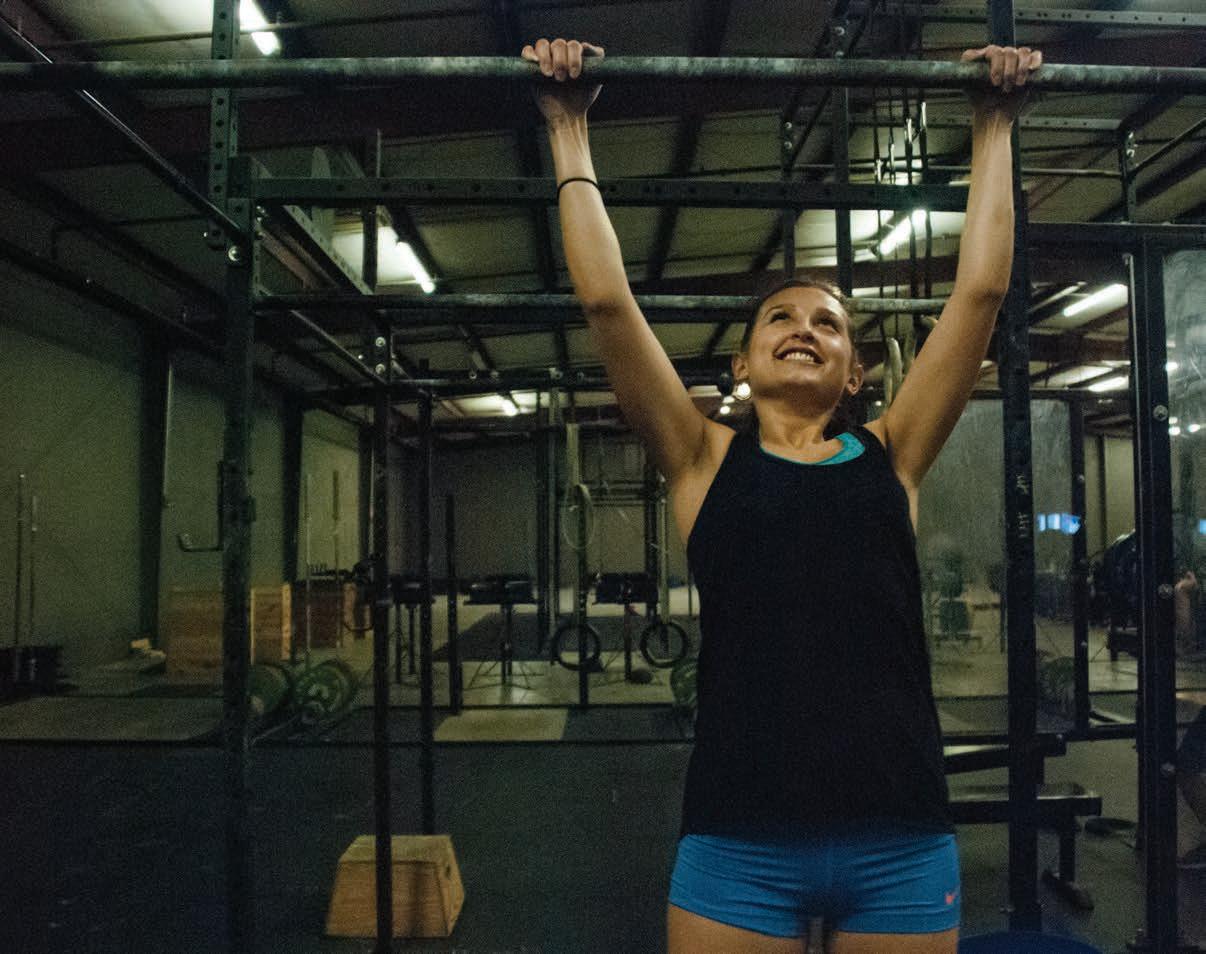 BY SAMANTHA ESCE // PHOTOS BY HANNAH CLEAVELAND // DESIGN BY WESLEY JEFFERIES
BY SAMANTHA ESCE // PHOTOS BY HANNAH CLEAVELAND // DESIGN BY WESLEY JEFFERIES
When you hear “CrossFit,” the mental image is often of an intense, hostile environment full of jacked-up personal trainers yelling workout commands at their clients; and crazed fitness junkies doing endless amounts of reps with the heaviest weights imaginable. This was pretty much the exact image I had in my head as I drove to the Carolina CrossFit gym. However, immediately after walking through the door, I realized my perceptions of the CrossFit experience were wrong.
While there were several muscular men and women walking around, no one was yelling, and everyone seemed happy to be there. The overall environment of the gym was very inviting and actually made me excited to work out. The workouts did look intense, but enjoyable, and all the trainers were continually motivating their clients and congratulating them on their progress. It felt more like a community, rather than the hierarchical trainer and client situation I had imagined.
I took the introduction to CrossFit class, which is free and great for anyone interested in CrossFit training, no matter what fitness level they’re at. Before starting the workout, my instructor explained the three main aspects of CrossFit: constant variety, functional movements and high intensity.
The high intensity, which is the most well known aspect of CrossFit, is actually not something that happens every workout. The varying levels of intensity prevent overworking your body. Learning about these aspects dispelled my previous perception that this kind of workout is not safe for your body. In fact, the creators make sure that you are exercising in the safest way possible.
After explaining how CrossFit really works, Josh led the class through a warm up, which included a few minutes on a stationary bike, lunges and dynamic stretches, or moving as you stretch. Then we moved on to the good stuff — the actual workout. I was very eager to get my first taste of CrossFit and excited to see what was in store.
The routine was pretty simple; there were no complicated moves or weights. It consisted of intervals of squats, situps, pushups and pullups. All the moves also had several variations to accommodate for all fitness levels. For example, using rings to pull yourself up at an angle instead of a full vertical pullup, or doing pushups on your knees or at an incline, which is what I had to do. Josh encouraged all of us throughout the workout and did a great job explaining how to do the movements and the different modifications.
By the end of the class, my arms were sore and I was sweating, but I felt great. I had conquered CrossFit, something I never imagined happening in my life. It’s definitely not as scary as most people think. Although the monthly rate is a little pricey, I highly recommend at least trying the intro class to anyone interested in CrossFit, or just looking for a fun, effective workout.



At first glance, South Carolina’s taco prospects may seem bleak, but after some serious investigative work, Columbia proved to offer a surprisingly diverse array of taquerias. While Moe’s and Salsarita’s might be closest to campus, try expanding your taco horizon — you may love what you find.

White Duck is a small taco shop out of Asheville, North Carolina, and only just opened its local Whaley Street location in early February. Unlike the other restaurants on this list, White tacos aren’t aiming for authenticity. Popular flavors include Thai Peanut Chicken, Lamb Gyro and Korean Beef Bulgogi, but their signature is the Bangkok Shrimp taco, which is so popular and so frequently copied that White Duck has a trademark on the name. Lightly fried shrimp are tossed in a sesame glaze and a Sambal chili aioli, and are topped with curried cucumbers. The shrimp are small enough that a couple fit into each bite, and the coolness of the cucumber plays well off the spicy aioli. Though unconventional, the taco is divine.
While White Duck’s tacos are the most expensive out of the bunch at $3.25 each, only one makes a delicious meal. The service here is also the speediest — White Duck is better suited for a quick bite than a sit-down meal.



Parking in Real Mexico’s lot can be a challenge, which is indicative of both how small and how popular the restaurant is. The place gets packed at dinnertime, which is always a good sign.
Though it’s located about 15 minutes from downtown, the trip out to Real Mexico is worth it. Like La Estrella, Real Mexico serves its tacos on two white corn tortillas, and they come with cilantro, grilled onions and lime wedges on the side. When three or more are ordered, a whole, roasted jalapeño is included as well. There are a few different choices of meat, but the stand out is the taco al pastor. Literally meaning “in the style of the shepherd,” this pork is marinated with chiles and pineapple, and the combination of spicy and sweet is perfectly balanced.
Each taco is $2, which is a steal considering that just two make a filling meal. The salsa offered with the chips at Real Mexico is thick and chunky, and it’s the best of the bunch.
Located inside of a Mexican market, La Estrella feels the most authentic of the restaurants listed. The dining area is in the corner of the grocery store and offers many dishes beyond tacos, including traditional Mexican meals like molcajete and pozole, as well as the typical enchiladas and burritos.
Each taco comes on two small, yellow corn tortillas, and they’re offered in multiple varieties of meat, from carne asada and shredded pork to the more daring tripa (intestine) and lengua (tongue). The tacos are served plain, but brought out on a plate with every necessary topping — cilantro, grilled and fresh onion, lime wedges and slices of radish. The standout is the chorizo, a type of Mexican pork sausage. The vibrant red meat is juicy and tender, and is in its best form when garnished with cilantro, onion and a squeeze of lime.
La Estrella’s tacos are cheap at $1.75 apiece, and the tortilla chips that come with the meal are thick and golden brown, with a pure corn flavor that makes Moe’s attempt seem like cardboard in comparison.
Taquería Jalisco could be easy to pass by — located in a strip mall off Bush River Road, the restaurant doesn’t scream authenticity. But while it may look bland from the outside, the interior is decked out in vibrant colors, and the menu features everything from fajitas to chilaquiles.
There are a few different types of tacos, but the star is the barbacoa, or barbecue. The pork adaptation is very tender and marinated in a spicy red sauce. The tacos are served with cilantro, red onion and a lime wedge, and are brought to the table with a killer salsa verde and salsa roja, which both work great with the barbacoa. Another must-try is the horchata. A traditional type of agua fresca, horchata is made by mixing rice milk with vanilla and cinnamon. Taquería Jalisco’s is thick, strong and refreshing, and is the perfect beverage to cool down with after ingesting too much of the spicy salsa verde. The tacos are $2 each, and are served on one small, yellow corn tortilla.
 Thai Chicken Taco from White Duck Taco
El Pastor from Real Mexico
Lengua Taco from La Estrella
Chorizo and Barbacoa from Taqueria Jalisco
Thai Chicken Taco from White Duck Taco
El Pastor from Real Mexico
Lengua Taco from La Estrella
Chorizo and Barbacoa from Taqueria Jalisco
We’re in South Carolina, and that means sweet tea. However, I’ve made this iced tea with you out-of-staters in mind, too. Its mild sweetness is augmented by mint to make something undeniably refreshing, the Mason-Dixon line be damned.


4 cups boiling water
8 black tea bags
7 T granulated sugar
4 cups cool water
40 mint leaves (about half a bunch)
Put the sugar and tea in a pitcher and cover with boiling water. Stir until the sugar dissolves. Steep for 10-15 minutes. Add cool water to the pitcher and remove tea bags. Chill the tea until cool. Add the mint leaves and crush them against the side of the pitcher while stirring with a wooden spoon. Serve over ice.
Check out more of Luke Haven's recipes in his upcoming cookbook "HBG Dessert Bar: Sweets and Drinks" coming out late this summer on Amazon.com.
OK, PSA time: Buy your moonshine from the store, not Uncle Beau. You don’t want to go blind. Also, if the words “apple pie” precede the word “moonshine” on the bottle, it’ll taste like neither. Get the good stuff and you’ll have one hell of a summer drink. Or, if you aren’t 21 yet, make it with seltzer and a little less simple syrup for a tasty homemade soda.
2 blackberries
2 T rich, simple syrup*
6 mint leaves
6 T moonshine (corn whiskey)
Lightly muddle the blackberries into the bottom of a highball glass. Shake the simple syrup and mint vigorously over ice. Clean out the empty container with the moonshine and stir into the minted syrup. Strain into the glass and stir. Fill the glass with ice and garnish with a mint leaf. If it isn’t sweet enough, muddle the blackberries some more.
*To make the simple syrup, combine 2 cups of sugar and 1 of cup water. Heat until the sugar dissolves and let it cool before use. Store in the refrigerator.
No, seriously.
I know what everyone thinks of when they hear the words “pink lemonade:" It's that food coloring and sugar-laden drink made from a powder. A drink more aptly described as "pink" than "lemonade." This isn’t that. Somewhere between herbal iced tea and the classic, this lavender-infused lemonade is subtly sweet and endlessly sippable. It's the perfect drink for lying in the grass on a hot day.
4 cup boiling water
½ cup granulated sugar
½ cup lavender flowers
zest of one lemon (in strips)
4 cups cool water
juice of four lemons (about ½ cup)
Cover the sugar, lavender and lemon peel with the boiling water and stir until the sugar dissolves. Steep 10-15 minutes. Strain the liquid into a pitcher. Add the lemon juice and cool water to the pitcher and stir to combine. Chill and serve.

Ah, summer. You see your friends’ posts from the beach or their overseas adventures, and you yearn for similar experiences, but without going into debt. There is hope — Columbia can be fun and exciting on a budget. Here are a few ideas to spice up your "staycation."

Fort Jackson’s water park, Palmetto Falls, is located on base and features two sets of slides, a lazy river and three pools. Open from 11 a.m. to 7 p.m. Tuesdays through Saturdays and 1 p.m. to 7 p.m. Sundays, the park is open to the general public and offers a cool oasis from Columbia’s oppressive heat. Admission is $9.50, and make sure to bring proof of insurance for entrance into the park.
The West Columbia Riverwalk, just past the Gervais Street Bridge, is a free walkway that winds around the Congaree River. There are picnic tables, canoe and kayak launch pads, and an amphitheater where summer events are held. The Riverwalk is open during daylight hours and is dog friendly.
Finlay Park is a little over a half-hour walk from campus and is one of the state’s best parks. Featuring around 18-acres of walking paths and landscaping, Finlay is a great place to go to have a picnic, sunbathe, play some soccer or maybe catch one of the events and festivals that are regularly held there. Admission is free and the park is open during daylight hours.
Arts & Draughts is a quarterly series at the Columbia Museum of Art. There's live music, interactive art and DIY stations, and wine and beer tastings. The next one is Friday, May 13. Admission is $9 and the event starts at 7 p.m.
First Thursdays on Main is a monthly event where Main Street businesses stay open late, from 6 p.m. to 10 p.m., and offer promotional discounts. But if you don’t feel like spending any money, there is still plenty to do with live music from local bands and open galleries from local artists.
Five After Five is a weekly event that starts April 28. Five Points will hold live outdoor concerts, and local vendors will be selling food and merchandise as well. The event starts at 6:30 p.m. by the fountain.
Do you want a day at the beach without using a tank of gas? Head over to the Lake Murray Public Park. Entrance is $3 per vehicle and you can spend the entire day sunbathing, swimming and picnicking by scenic Lake Murray. Summer hours are from 10 a.m. to 8 p.m. on the weekends, and 11 a.m. to 8 p.m. during weekdays.
Thirty-five miles from campus, Dreher Island is a state park that offers camping grounds, fishing, kayak and canoe rentals, and easy hiking trails. Admission is $2 and camping sites are $24 a night.
Lake Jocassee is a 75-mile lake located three hours from campus in the northwest corner of the state. Its only drawback is that it's near Clemson. The picturesque lake offers multiple fishing spots, canoe and kayak rentals, and plenty of lakefront camping sites. Devil’s Fork State Park, situated on Lake Jocassee, offers two hiking trails that have views of the lake and multiple beaches for a quick swim. Devil’s Fork is open from 7 a.m to 9 p.m. for visitors this time of year, and admission costs $2.

With a student body exceeding 32,000, USC is an ocean of faces. The university is in the top 100 largest undergraduate enrollments in the U.S., and for the last three years each freshman class has been larger than the one before it. The tide of students that flood the Pickens Street bridge, the torrent of faces on Greene Street during a class change, keeps USC cohesive.
Late teens and 20-somethings all run frantically, tripping over bricks and to-do lists in the endless chaos that comes with making one’s way. It’s easy to become the all-consumed college student, only familiar with those in your dorms or classrooms.
In a university offering such a wide range of majors and programs, there’s greater appeal to students who don’t fit the stereotypical college mold to come back to school or to get started for the first time.
“Coming back, I definitely had a focus, and I knew I wanted to excel,” April Sundell, whom you may know as Sadie Black on 93.5, says. “All but one of my grades has been an A.”
Sundell, a 34-year-old mass communications student, came back to school after her newly-formed family began to settle in. Between three kids, a husband in the Navy and a job as an early morning radio personality, Sundell has plenty on her plate.
She’s back and forth between 93.5 and FOX 102.3, where she DJs on Saturday nights. Her entrance into radio is extremely atypical: after a chance encounter with the DJ of the then
enthusiastic and speaks frankly.
“I feel like I’ve got my s--- together finally, not just organizationally but also my head space,” Sundell says. “The older I’m getting, the better I get emotionally and mentally. I look back and I'm like, 'Man, I should have had all this confidence when I was that age.'”
Sundell often finds herself answering the question, “How do you do it?” She credits her friends and family for their undying support,
Magic 98.5, Sundell practically talked her way into running the behind-the-scenes operations.

“If you want something bad enough you just do it. It’s just my drive,” Sundell says.

She seems spurned on by her workload, and despite frequently mentioning how tired she is, you wouldn’t know it given her attitude. She’s
but she doesn’t hold anything back when talking about hardships.
“I like being busy because it kept my mind off the fact that my husband wasn’t home or that he was underwater,” Sundell says. “You never know what’s going to happen and sometimes you don’t sleep for weeks on end.”
“If you want something bad enough you just do it. It’s just my drive”— April Sundell



Sundell typically arrives home after her kids do, and it's been a struggle for her to draw herself away from her kids for extended periods of time. It's why she dedicates herself to her school. Any time she can’t spend with her children or husband when he’s home she tries to make worth it.
She’s ready for graduation, and to finally cross something off her major to-do list. And see feels some compassion toward the typical frazzled college student.
“The end result is a good thing, and no matter
14 and 17, and their journeys into adulthood. He splits his time between McMaster and his two girls and wife — he's one of many students at USC you might call "nontraditional."
Agullo uses burlap as a constant texture throughout the series. It lends an element of consistency, but there’s more to it than that.
“It’s coarse, it hurts and it represents my pain,” Agullo says.
He's talking about the pain he feels as his daughters take their steps toward becoming more independent. The images themselves are
leaving Columbia. He has a strong desire to see other cities and places, but he's apprehensive about picking up his family and moving. Whatever choice he makes, however, his devotion will always be to his family and his photos.
None of the students have shied away from the challenges that returning to school has brought them.
"I’m getting into this routine, and I’m like, 'I know what I can do, I know how well I can do it, I’ve got confidence,'" Sundell says. "I’m not second-guessing myself as much, and it puts a
how hard it is now, you just know that it will all end up well,” Sundell says.
George Teague, a 71-year-old photography student, is frequently mistaken for a professor. His snow white hair and immutable suit game is probably to blame.
"There’s about a dozen of us,” in reference to the amount of older male students in McMaster college.
He speaks with the cadence and deliberateness of someone who has had a lifetime of experiences. Teague studied archaeology at the University of New Mexico, and received his master's degree from the University of Arizona in 1971. After 35 years of site work and digs, he'd had enough and returned to his hometown in Sumter, South Carolina in late 2002.

Teague began by taking a single art class every semester in 2005. He sees a lot of similarities between archaeology and art which he thinks drew him to it.
“Archaeology and art history are pretty closely linked from the beginning because a lot of archaeology was museum-related,” Teague says. “I’d always enjoyed art galleries and museums, and I just marveled at how people could take simple materials and make such beautiful things.”
Teague has taken almost every art class on the roster, and he enjoys something about every medium. But he perks up when he speaks about photography.
“I like the mechanics of photography, especially using the older cameras,” he says.
As for his current work, Teague enjoys blending digital and analog processes. He excels at the latter but welcomes help from fellow students on the former. Teague, like many others in McMaster, realizes the importance of schooling even in fields of arts.

Robert Agullo, a 34-year-old Guam native, is a fourth-year photography student.

“When I first started, I was all over the place,” Agullo says. He’s won awards for his recent photo series that centers on his two daughters, ages
an interesting mix of relatively warm light with the burlap adding a curiously haunting sense to the picture. The most impactful image of the series is of a burlap-wrapped, mummy-like figure lying on a couch.
“The wrapping of it represents a cocoon and them trying to break free as they grow up,” Agullo says.
He attributes much of his growth as a photographer to his return to school. His time in McMaster was instrumental in helping him find his direction and voice. Each semester focused on a different, key aspect of photography, whether it was consistency, lighting or framing.
“Last year I was at the New Orleans [Society for Photographic Education] conference, and I was approached by some people from Nebraska, Boston and New York,” Agullo says. “But being a parent that’s the hard part.”
Agullo is set to graduate in May, and he speaks anxiously when he talks about his postgrad plans. After all, school is what brought him his exposure.
"New Orleans was my first experience with something like that, going out and being judged and getting critiqued. That was eye-opening for me because they really considered your work as art," Agullo says.
He seems conflicted about the possibility of
lot less stress on me, and I just feel better about life in general."
Teague says it's about experiencing the unexpected.
"You get into classes you didn’t know you would get into or you didn’t know existed," he says, "and it opens up a whole new part of the world."
“The older I’m getting, the better I get emotionally and mentally. I look back and Im like man I should have had all this confidence when I was that age.”
Robert AgulloGeorge Teague
April Sundell
— April Sundell




















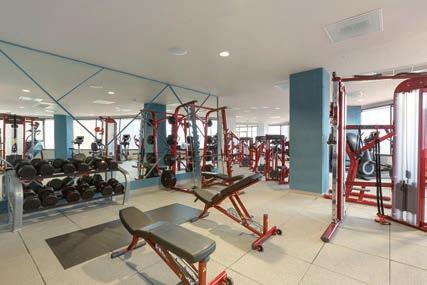








We imagine college as an enchanting place where hundreds of new friends are waiting for you. The reality of moving away from home and coming to school is a bit bleaker.
It’s much easier to talk about the great house parties than the crippling stress and pressure that comes along with being in college. When the reality sinks in, it's not only a wake up call, but also can seriously take a toll on someone’s mental health.
And because of the stigma against mental health, it's not easy for a student to call home and admit that they're struggling.
Many mental illnesses begin to appear between the ages of 16 and 24. That, combined with the stress of transitioning to college, can attribute to developing anxiety, depression and other mental illnesses.
According to Dr. Rhea Merck, a psychology professor at USC, adapting to college sets a challenge for many students.
She knows there are a large number of students experiencing a variety of mental health issues on campuses everywhere, but it’s nearly impossible to know exactly how many because so many of these struggling students resist coming forward.
In fact, only 37.7 percent of college students receive psychological or mental health services according to the American College Health Association.
Nearly everything about a student’s life changes when they go to college — social networks, schedules, activities, even the water that they drink. Drastic changes are stressful, and not everyone is equipped to handle that. In the midst of all this change, anyone with an underlying predisposition for a mental illness is likely to begin experiencing problems.
“It’s like adding sunshine and water to a seed,” Merck says.

But coming to college is only part of the equation.
The leading mental health issues among college students in 2015 were social anxiety and academic distress, followed by generalized anxiety, then depression, according to the Center for Collegiate Mental Health annual report. The Association for University and College Counseling Center Directors tells us other common concerns of students receiving mental health services stemmed from relationship problems, suicidal ideation, alcohol abuse, sexual assault, self-injury and ADHD. There's
a wide range of concerns students are reporting, but few come forward to talk about the problems they’re facing according to Merck.
It's been proven that counseling services can improve academic performance, so the question remains: Why don’t students more frequently take advantage of the mental health services universities offer? At the end of the day, it all comes down to stigma.
Merck says many students are afraid to admit they’re struggling or feel like they’re failing if they ask for help. Some fear someone will tell them what they’re experiencing isn’t valid. Mental health isn’t something people like talking about because with it often comes shame. While the general views on mental illness have been gradually improving through awareness over decades, there’s still plenty of destigmatizing to be done.
Aside from centuries of these false perceptions being spread about the reality of mental illness, much of this stigma comes from the separation of mental and general health, not only in the public eye, but also through much of the health care system.
The first step to beating the stigma is integration of these health services, says Dr. Mark Kilgus, USC health center psychiatrist and former department chair of psychiatry at Virginia Tech.
“The reality is there is a biological basis for so much mental illness that it’s kind of a false dichotomy now,” he said.
Kilgus believes the two are too integrated to separate them, considering nearly all mental illnesses can have serious physical symptoms. Despite some common views, mental health is just as physical as a broken leg, and treatment should be prioritized as much. Just because there’s no cast doesn’t mean there isn’t a healing process.
“Before the age of biological psychiatry, it was supposedly just a spiritual issue or a psychological issue, not a biological issue. People thought it was all in your head,” he said. “Well, it literally is all in your head because there’s a three pound organ in there that is responsible for a lot of these symptoms.”
Mental health is thought of as a taboo by many, so people are more likely to ignore their symptoms and wait until they’ve reached a severe state to reach out for help. In Merck’s point of view, the more people spread awareness about mental illness, the more hopeful the picture becomes.
“I think that if students get the idea that a lot of these big problems can be headed off early, prevention works, and it works well,” Merck said. “By then, they haven’t flunked out of their classes, lost weeks of attendance. What happens when it goes untreated is that everything starts to fall apart underneath you, and the hole gets bigger and bigger.”
According to a survey on mental health by the National Alliance on Mental Illness, 73 percent of the respondents said they experienced a mental health crisis in college, yet 35 percent of those students said their college did not know about their crisis. Due to the isolation of one student in a pool of thousands of others, many self diagnose.
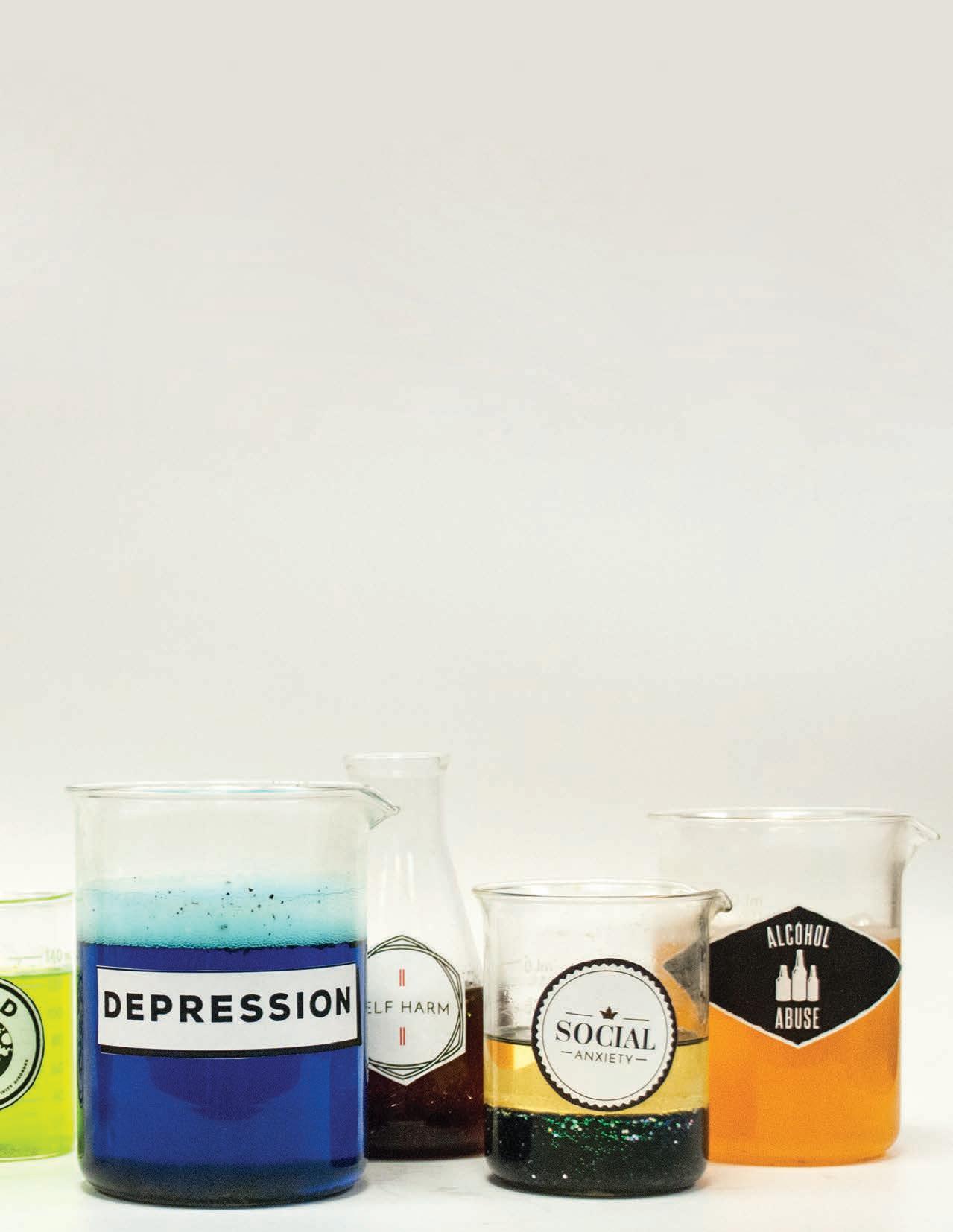
USC’s counseling center's goal is to reach out to students before they reach a critical point. Tobin Lovell, assistant director for community-based services at the counseling center, is one of many working toward making the counseling center more accessible on campus.
“Our goal is to not wait for students to come into the counseling center but to make counseling center services more available in a preventative fashion to students outside,” he said.
The biggest challenge, Lovell said, is overcoming the stigma that surrounds mental health problems and getting treatment. Beating this stigma starts with more visibility of counseling on campus and letting students know that reaching out for help is not only
important but admirable.
“It is strong to reach out for help. It is strong to seek counseling center services, and it is effective,” he said. “The way to bust the stigma is to say, 'Wait a minute, health is health.' If you look at health holistically, there is no difference between mental and physical illness.”
In this case, USC is actually ahead of the game. Counseling and psychiatric services are done within the university health care system and kept in-house, rather than contracted out to third-party counselors, like many other universities. By hiring their own psychologists and psychiatrists, the university is able to more successfully integrate mental and physical health services.
As for the future of the counseling center, they’re taking the integration plan a step further. The university is planning to continue expanding their services across campus by joining the counseling and general health services in the new building being constructed between the existing health center and the library, which is set to open in July 2017.
Counselors like Kilgus hope that physically connecting the health center and the counseling center into two buildings will decrease the stigma and integrate health in a more holistic fashion.
“It’s not medical and mental,” Kilgus said. “It’s all medical.”
COUNSELING SERVICES
Close/Hipp Building, fifth floor 1705 College St. 803-777-5223
PSYCHIATRIC SERVICES
Thomson Student Health Center, third floor
1409 Devine St. 803-777-1833
NATIONAL SUICIDE PREVENTION LIFELINE 800-273-8255


Someone in America is sexually assaulted every 107 seconds, and the average college student reads 450 words per minute. By the time you finish this story, the number of victims will have increased by three.
Today, the story isn’t that sexual assault is happening on college campuses — we know it is. Over the last several years, young women’s accounts of attacks and stories about how universities are trying to combat a seemingly endless epidemic have seeped into news cycles across the country.
South Carolina’s statewide rape rate has exceeded the national rate since 1982. This year, USC created a new website with resources to prevent and report sexual assaults. In February, the university sent out a survey to students about sexual assault on campus, the results of which are due back sometime this semester.
But for many, it’s still uncomfortable to talk about and surrounded by questions.What do I do if I was sexually assaulted? Who do I tell? How do I know if it was sexual assault? What happens if I report it?
Will I get in trouble?
Where do I start?
THE DEFINITION
Now we have two problems: Sexual assault is still happening, and it’s going unreported. And what sometimes hinders victims from reaching out is trouble defining what the incident was and whether or not it was worth reporting.
If you’re looking for a universal definition of sexual assault, you won’t find one. Some are very technical, some are all encompassing and
There are hundreds of definitions for the terms listed below, but for the purposes of this article, we use these definitions from the U.S. Department of Justice “National Crime Victimization Survey.”
Sexual Assault
Attacks or attempted attacks usually involving unwanted sexual contact between a victim and the offender; sexual assault may or may not involve force and includes grabbing or fondling (U.S. Department of Justice, Bureau of Justice Statistics “National Crime Victimization Survey”)
The unlawful penetration of a person against the will of the victim, with use or threatened use of force, or attempting such an act
Number of reported rape offenses in South Carolina
2012
1,709
1975
741
130.8%
Percentage that offenses have increased from 1974 to 2012
some are really vague. But what it comes down to is how the victim feels.
“It becomes sexual assault when the victim feels as though they’ve been victimized,” says Bobby Gist, executive assistant to the president for Equal Opportunity Programs. Gist’s office deals with Title IX cases and investigates sexual assault cases. “When does yes mean yes, when does no mean no — it really doesn’t matter. It’s the victim who decides whether it’s sexual assault."
Most rape definitions include some sort of penetration, whether vaginal or anal, and often a use of force, though force is not necessary for the act to be constituted as rape.
Gist and his office refer to those who have been sexually assaulted as “victims.”
Shannon Nix, associate director of the Sexual Assault and Violence Intervention and Prevention office and her staff refer to those who have been sexually assaulted as “survivors."
Nix says that slight word change helps empower people in a time when they feel most vulnerable and weak.
If you report a sexual assault to SAVIP, it’s confidential. Nix and her team won’t contact law enforcement, call the hospital or tell anyone if you don’t want them to.
From there, you can decide if you want to bring it to the police, who will open up a criminal investigation, collect evidence and conduct interviews. USCPD will alert the Equal Opportunities Office, which will investigate as well. If you need to go to the hospital, a court hearing, a Title IX meeting, someone from SAVIP is available to go with you. And the assault didn’t have to happen at USC or in Columbia for USC to claim jurisdiction. Gist says his office often works “hand-inglove” with police departments outside of Columbia to investigate sexual assault cases.
“It doesn’t matter if it’s one of our students and it happens in Miami or if it happens down in Hilton Head or if it happens down in Myrtle Beach,” Gist says. “If it’s one of our students that it happens to, we will find out whether or not that student was referred to the local police department.”
You can also report a sexual assault online, whether you were the victim or a bystander. That report is immediately sent to SAVIP. From there, the user can specify whether or not the victim wants to pursue university action, which will move the report along to USCPD and EOP.
If the assault happened between two students, the Office of Student Conduct can open up an investigation and conduct a hearing. If the
1 in 5 women have been the victim of attempted or completed rape during their lifetime
1 in 71 men have been the victim of attempted or completed rape during their lifetime
Whether it’s sexual assault or relationship violence, all of their power’s been taken away ... It’s the absolute worst way to take anyone’s power away.
offending student is found guilty, this could result in a no contact order or suspension.
University employees, including resident mentors and peer leaders, are obligated to report any instance of sexual assault they hear of from a student they are responsible for. If you mention that you or someone you know was sexually assaulted to a professor, they are legally required to tell the university about it.
Victims can file an anonymous report with police, in which evidence is taken and locked away for a year. This way, if the victim changes their mind and decides to take legal action, they have the evidence.
In USC’s 2014 Cleary report, there were 10 reported sexual assaults. That doesn’t mean there were 10 sexual assaults on campus in 2014 — it means 10 people came forward and reported them, which echoes this December 2014 U.S. Department of Justice report:
“For the period 1995 to 2013, females ages 18 to 24 had the highest rate of rape and sexual assault victimizations compared to females in all other age groups. … Among student victims, 20 percent of rape and sexual assault victimizations were reported to police, compared to 32 percent reported among non-student victims ages 18 to 24.”
Students are less likely to report a sexual assault than nonstudents, even though students have more options when it comes to investigations.
“That’s the biggest problem that we’re having right now. Sometimes, people come in a year or two years later to report it,” Gist says. “And it’s at that point in time that we definitely have to get law enforcement involved. We want these things reported in a timely fashion. It’s become a major issue.”
Nix says the SAVIP office won’t recommend any particular route for victims, aside from counseling, because no two incidents are the same. Some may require immediate medical attention — if the victim wishes to undergo a forensic examination, for example, they’re on a 72-hour timeline.
“We just lay [the options] out and say, ‘Let’s follow up in a couple of days. Take time and think about what you want to do,’” Nix says. This is one of the most important things Nix says her office does: give the victim a choice. SAVIP will never cold call victims to ask them to come in. The entire process is voluntary. By giving the victim the reins, they have the power to make the next decision.
“Whether it’s sexual assault or relationship violence, all of their power’s been taken away,” Nix says. “It’s the absolute worst way to take anyone’s power away.”
It’s mid-August, and campus is flooded with new students, particularly first-year female students rushing in sororities. They’re putting sheets on their beds, hugging their parents goodbye and looking for new friends.
It’s now that they’re at the highest risk for sexual assault. The first six weeks of the fall semester — between move-in and Thanksgiving — is what experts call the “red zone,” when young women are most susceptible to offenders. New students are in an unfamiliar place, eager to start social lives and vulnerable.
“We’re very close to Five Points,” Nix says. “Alcohol and sexual assault — there’s a correlation there, particularly with college campuses and particularly with ours since we’re close to an entertainment district.”
In the U.S. Department of Justice’s study, 47 percent of female student victims said their offender was under the influence of drugs or alcohol.
More than 49 percent of rape victims in South Carolina in 2012 said their offender was an acquaintance. And when it came to college-aged women nationally, 80 percent of victims knew their offender.
And the beginning of the year isn’t the only red zone. Nix says her team sees an uptick in clients during football season, particularly after home games. The weather is warmer, and her office has prepare themselves for events like St. Patrick's Day and Carolina Cup.
“We know it’s happening,” Nix says. “But more people coming to my office doesn’t mean there are more sexual assaults. It means more people are getting help.”
SEXUAL ASSAULT AND VIOLENCE INTERVENTION AND PREVENTION
Thomson Student Health Center 1409 Devine St. Columbia, Sc 29208
803-777-8248
Walk-ins are always accepted
USCPD
803-777-4215 (Police dispatch)
803-777-6472 (Victim services)
OFFICE OF STUDENT CONDUCT
803-777-4333
COUNSELING SERVICES
803-777-5223
EQUAL OPPORTUNITY PROGRAMS
803-777-3854

This summer, sportswear pieces take the lead as the top trend of the season. Athletic wear or Athleisure is becoming increasingly more prevalent as perfect everyday wear, and it is easy to incorporate into your wardrobe. Bright pops of color in tech-specific textiles are racing into stores. So lace up your kicks and throw on your hoodie, because now your workout clothes are suitable for both in and out of the gym.


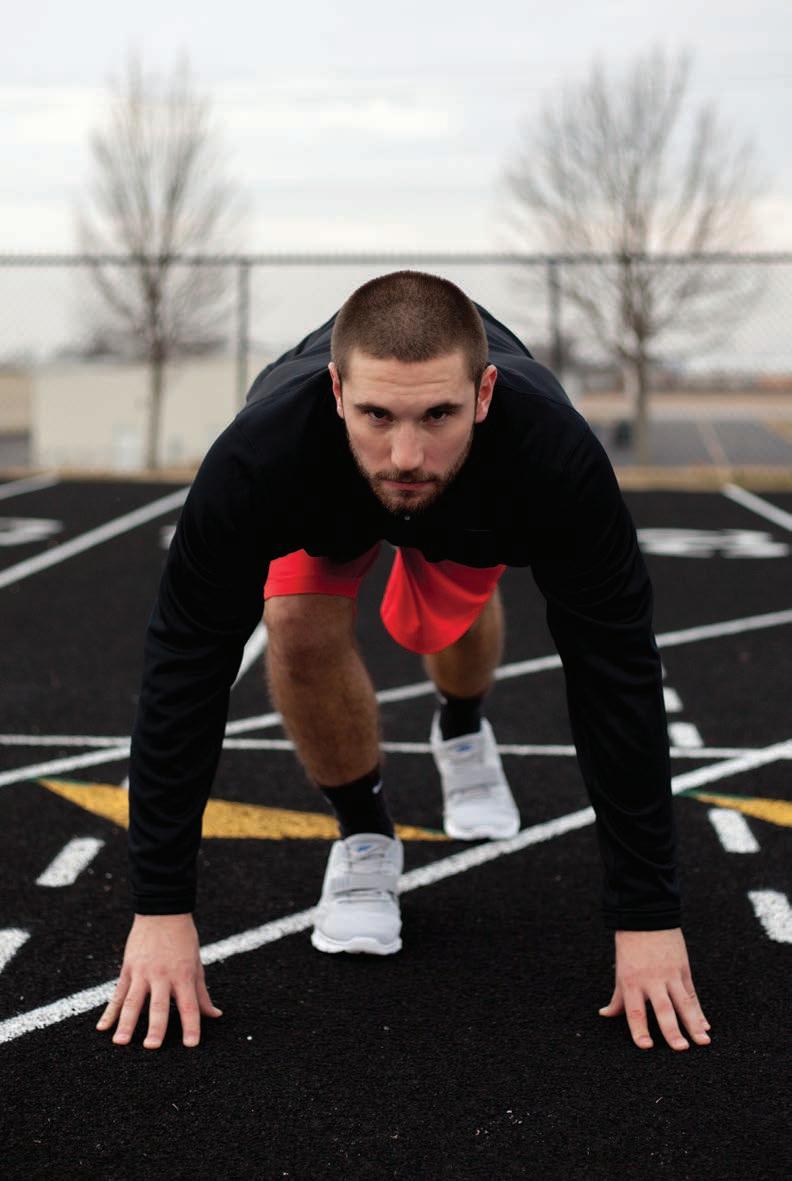




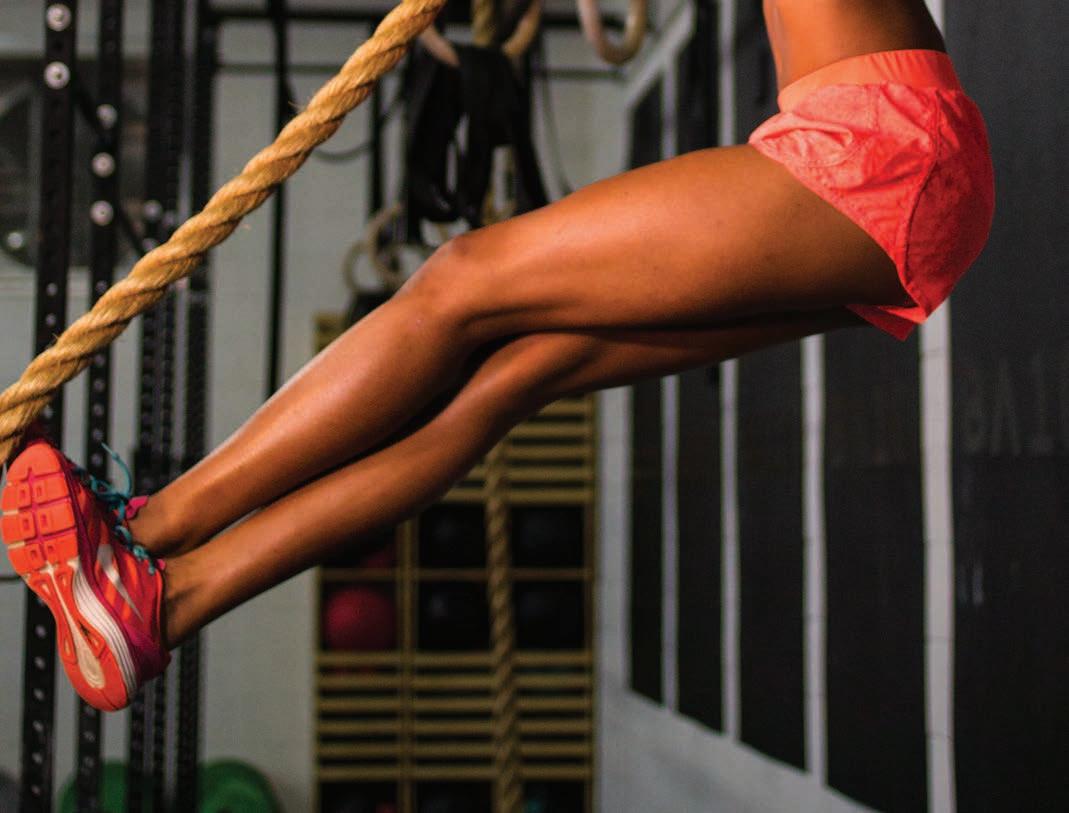

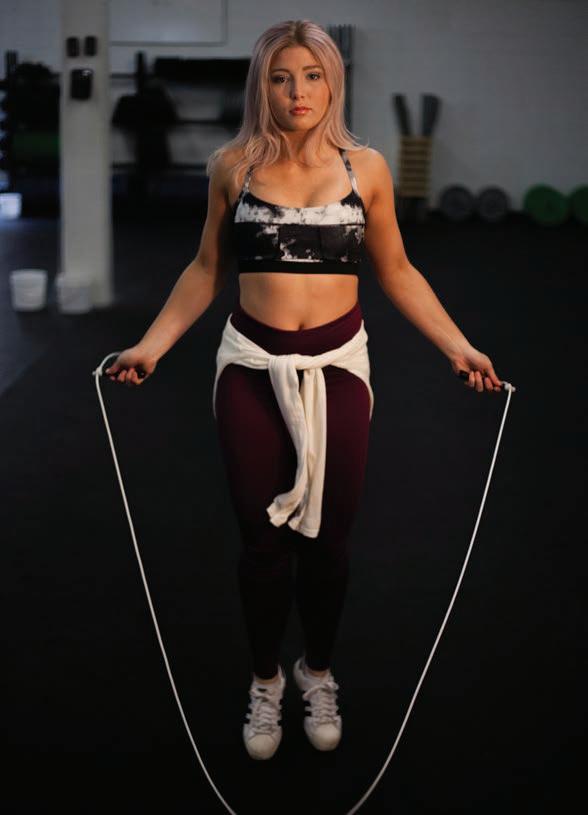


Fitness accessories have been huge this past year and are continuing to find their way into our everyday lives. Neon hues are stocking the racks recently bringing fun and excitement to ordinary workout gear. So whether you are a self-proclaimed fitness guru or consider walking to class a workout, athleisure is the modern way of being comfortable, but also polished.
1. Water Bottles: swellbottle.com 25 oz. Bikini Pink $45; 17 oz. Shadow $35
2. Shoes: (similar because exact style is not available anymore) Nike.com 4.0

3. Fit Bit Covers: Target Fitbit Replacement Bands 3-Pack $29.95
4. Weights: Target Champion 3lb Hand Weights $5.49 each

5. Yoga Mat: Target Champion Classic Grip Yoga Mat $14.99
 1.
2.
3.
5.
1.
2.
3.
5.
Rukia Brooks is a fourth-year computer science student who creates video games. Her puzzle game "Color Collisions" was selected last year as the best game by a student developer in Indie Bits, the gaming portion of Indie Grits, a Columbia arts festival.
Brooks’ interest in video games began when she and her brothers played "Super Mario Bros." on their dad’s NES from the '80s. She was a bit of an entrepreneur in middle school by selling old games to her classmates.
“Play is innate. We do a lot of things by play. It’s how we socialize,” she says. "[Video game designers and developers] take that play and put it into a virtual sphere.”
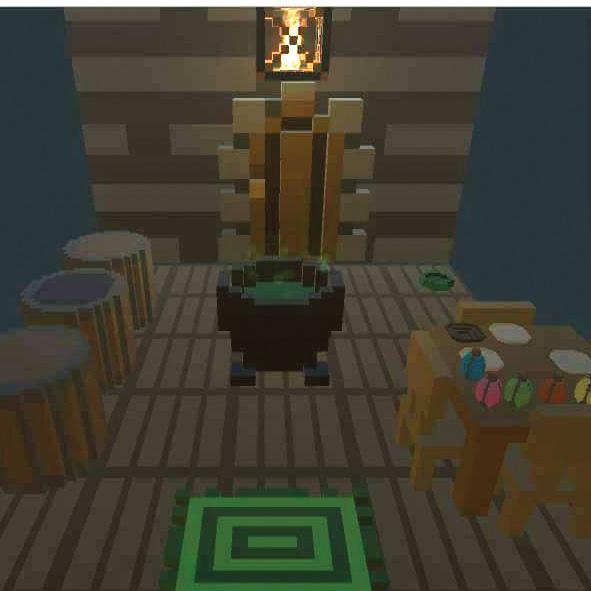


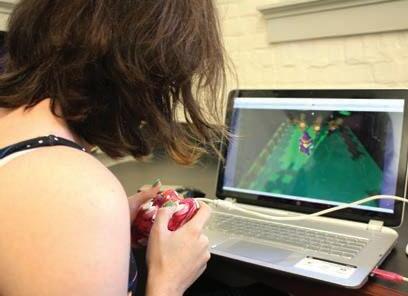
Gaming has also been a way for Brooks to alleviate stress.
When she got her first smartphone, her foremost priority was to download a "Tetris" app similar to what she used to play on her flip phone. But newer versions are cluttered with advertisements that put her off. “They ruined 'Tetris,'” Brooks says.
Brooks has a taste for simple, yet challenging games. She has a vision to use the medium as a platform for social commentary. The 2012 computer game "Dys4ia" is about the personal experience of a transgender woman undergoing hormone-replacement therapy, and it was influential for Brooks. It helped her realize “games can be more than just play. They can

“Games can be more than just play, they can handle serious issues just like any other piece of art.”
— Rukia Brooks
handle serious issues just like any other piece of art.”
She and her game design classmates aim to do just that with their current assignment. Their work in progress is an RPG, or role-playing game, about a colored female who must return home after embarking on an adventure.
Brooks also applies her commitment to diversity beyond the content of the games she designs and develops. Through a partnership with IT-oLogy, a Columbia based non-profit, Brooks hopes to inspire and empower girls to pursue STEM
fields. This April, Brooks will be one of the teachers in a video game workshop for local middle school and high-school aged girls.
The participants will learn the fundamentals of game design from a model similar to "PacMan," in which personified cupcakes eat sprinkles and chase the protagonist. Brooks says she hopes the girls will gain new skills and greater self-confidence. Both were essential in her own path.
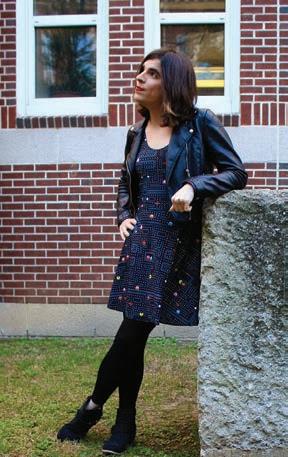

A critical experience for Brooks has been an email correspondence that she has kept up with Ian Tornay, a community manager at Instant Action
and Garage Games, a game developing company for which she dreams of working for someday.
“The worst thing people can do if you contact them is ignore you,” Brooks says.
It is a piece of wisdom that she heeded then and when she first made the workshop pitch at IT-oLogy. Brooks aspires to continue making games that exhibit her standards of simplicity, inspire others and challenge societal norms.
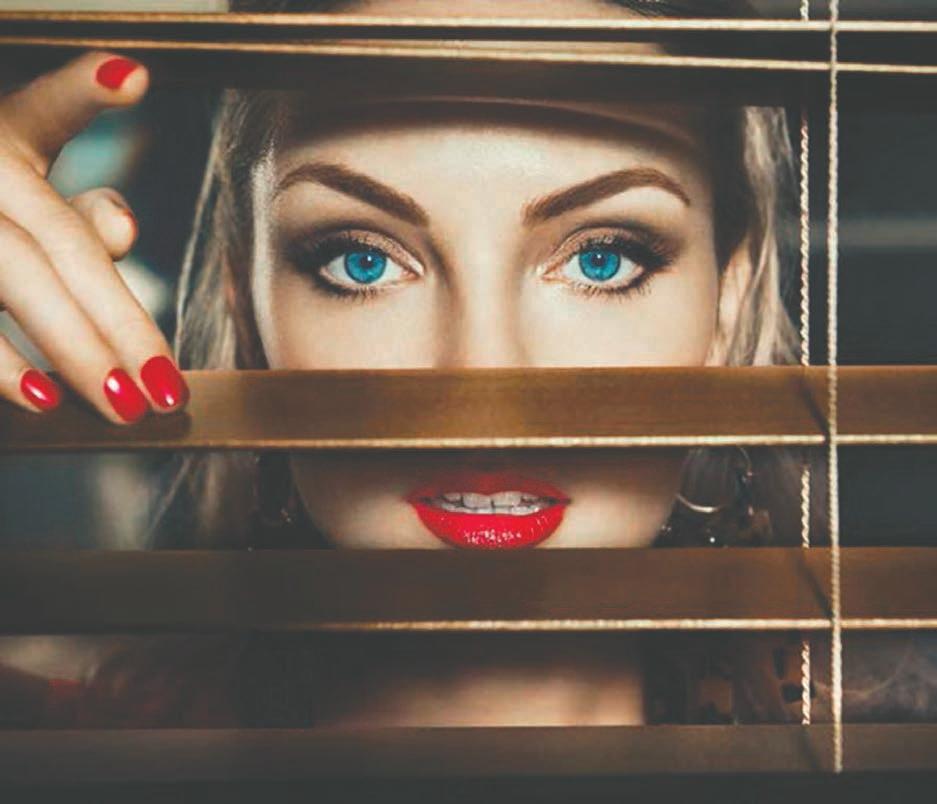







1. “GodWin” by Korede Bello (Nigeria)
2. “Hao Hua Hong” by Béla Fleck & Abigail Washburn (U.S. duo covering traditional Chinese New Year song)
3. “Cooley’s / The Cup of Tea / The Wise Maid” by Tulla Céilí Band (Scotland)
4. “No Näed” by Mari Pokinen (Estonia)
5. “Revolution” by Helly Luv (Iran/ Kurdish)
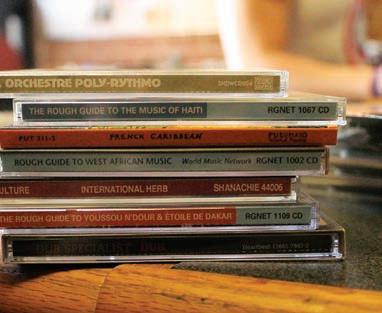 BY LAUREN GALIDA // PHOTOS BY ALYX COPLEY // DESIGN BY BRITTANY WILT
BY LAUREN GALIDA // PHOTOS BY ALYX COPLEY // DESIGN BY BRITTANY WILT
Meg Southern, assistant principal at the international house at Maxcy College, aspires to create an educational dialogue between international students and students in Columbia through her radio show, “Passport Playlist.” Tune in on Mondays from 2 p.m. to 4 p.m. to hear international tunes and learn about different cultures. Also, check out the show’s playlist, “audio_ voyager," on Spotify.

How did you come up with the idea for this show?
We didn’t want everything to be just kind of in a classroom setting. Everybody loves music — we figured that was a good way to get people talking about things that are different. You know, every country has its own musical tradition and a list of artists that are unique to that country, so we thought it would be a good way to get students talking about things that really excite them.
What is the format of the show?
Each week we have a new international guest on the show, and they bring a playlist of artists from their home countries, and we divide it into sets of about four or five songs. In between those sets we talk about different topics that are pertinent to international living. So example questions I might ask — I always ask them to introduce themselves at the beginning of the show — “What’s your name?" “What year are you?” “What are you studying?” — and kind of the same questions you would ask in an interview. Then in subse-

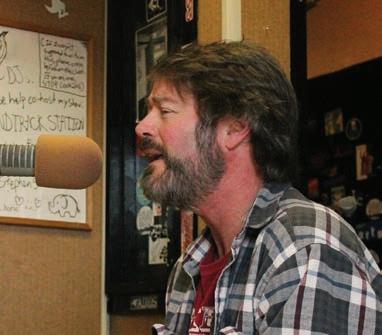
quent sets I will ask them things like, “What’s food like in your country?” “What big holidays are coming up?” “What’s the predominant religion?” “What’s the predominant language?”
What has surprised you most about this experience?
I think it's really how powerful music can be even if you don't understand the lyrics. Obviously lyrics are powerful, and understanding a foreign language allows you to connect with people on a level of intimacy you can't always attain through translation to English. But music itself is also a very intimate form of communication. So many times we've played music that was totally new to me, that has lyrics that are still inscrutable because I don't speak Wolof or Hindi or Dutch, but that music still communicates a feeling that transcends other kinds of language. It's really amazing how universal emotions can be, even if you don't have words for them in your native tongue, and music has the power to convey that.
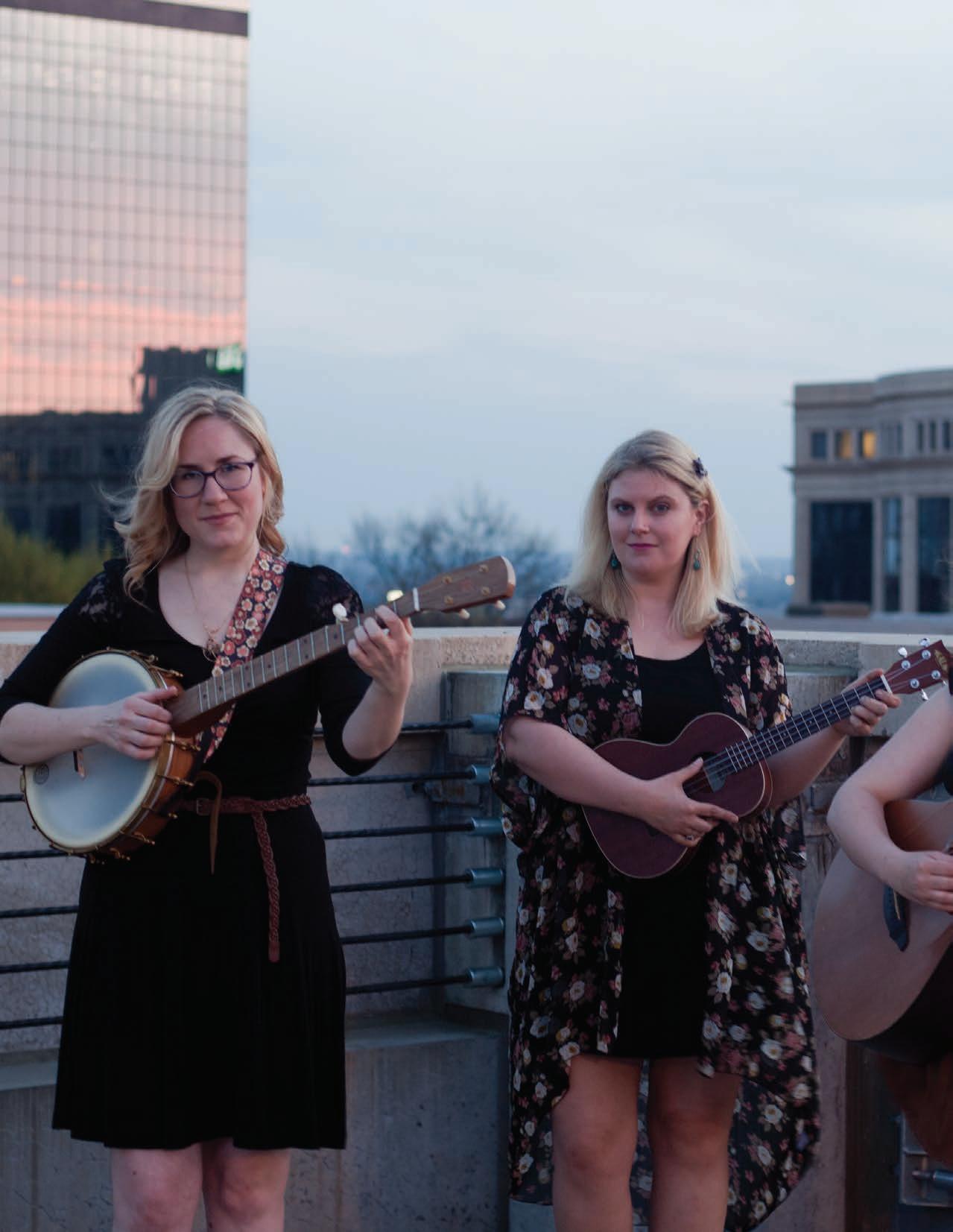 BY KASEY MEREDITH // PHOTOS BY JOSH THOMPSON // DESIGN BY KELLEN LaGROON
BY KASEY MEREDITH // PHOTOS BY JOSH THOMPSON // DESIGN BY KELLEN LaGROON
After numerous jam sessions, Perrin Skinner, Kristin Harris and Kelley Douglas decided they should put a name on it, and thus the Prairie Willows were born. Skinner and Douglas are both long-time musicians, and Harris has been playing since “she was zero years old,” Skinner says. But they aren’t just bandmates: they're friends. After jamming together and being told to do open mic nights, the Prairie Willows, formerly the P---y Willows, decided to form in 2012.
Initially playing covers of classic country tunes from artists like Willie Nelson and Dolly Parton, the Prairie Willows began writing their own songs. Skinner, Douglas and Harris switch off instruments, varying between guitars, ukuleles, banjos and violins.
“We just started bringing in different things we were working on to each other and adding harmonies on it and mixing different instruments in it, seeing where it all went," Douglas says. "And a lot of the beauty came out of just the three of our voices, and we realized that naturally our tones mix."
The Prairie Willows are one of Columbia’s only all-women bands as well as one of Columbia’s only folk bands. With carefully and eloquently placed harmonies, these ladies have layers of vocals.
“We put a lot of time and energy into making ourselves blend, and I think that’s the most organic sound you can create: your voice,” Douglas says. When it comes to honing their craft and songwriting, the Prairie Willows are meticulous. There’s always room for change in songwriting. “We keep progressing, getting tighter and getting better at singing together. Perfecting is the goal,” Skinner says.
All songs essentially begin a cappella, and gradually instruments are thrown into the mix. “Playing through it, we kind of hear ‘Oh, this could use some banjo, or it needs a bass, or some ukulele, something light,'” Harris says.
They select what they want in order to create texture, even if that means pulling an instrument from a song because of competing sounds after they’ve been playing the song with it for a few months. “Sometimes we’ll spend an entire evening practice on one song; other times we’ll play through a whole set in two hours,” says Harris.
It might seem like the Prairie Willows have a big sound because of their wide range of instrumentation, but the acoustic nature leaves the instrumentation feeling sparse. However, Harris says this works to their advantage by making the vocals more exposed, giving them a bolder sound.
“It was just kind of like we’re friends, we’re playing music, I like what you’re doing, let’s mix stuff together,” says Douglas. Actually, the Prairie Willows never intended for their act to be female-fronted.
“Honestly I’m surprised there aren’t more,” Skinner says. Harris adds, “It’s surprising that we’re one of the only ones that have found each other.”
Being in a band that isn’t strictly business has it’s perks. When one of them has had a long day, the others are fully supportive, but that doesn’t mean they don’t try to make things sound as
best they can.
“I think you need that chemistry there between friends because you don’t want to play with people you don’t like,” Douglas says.
Band practice isn’t a chore either. “We enjoy playing with each other, and coming up with new ideas, and coming up with new sounds, so it hasn’t really gotten old or boring,” Harris says.
Standing out from the slew of metal and punk bands in the Columbia music scene actually works to the Prairie Willow’s advantage. Bands from Asheville, a hub of folk music, will often ask to play with the Prairie Willows because they’ve got a similar sound.
But sometimes being in a bar scene can be cumbersome, especially “when you feel like, ‘Aw man, this band's super loud and their drums are blah blah blah,' and you’re playing acoustic,’” Skinner says.
No matter the genre of the other bands, “there’s some good head nodding going on, hillbilly dancin’, some foot tappin’,” Douglas says. The audience usually feels like they have to get really rowdy, but that’s not always the case, as some of their songs aren’t danceable.
“More times than not, people in the bars will get surprisingly quiet, like we’ll play an a cappella number, and the room will be silent. And then some rock band will come up, and it’ll get loud again,” Harris says.
The Prairie Willows' fan base is diverse because of the wide range of venues they play at. You can frequently catch them at Art Bar or New Brookland Tavern, but they’ve been known to play private events such as wedding rehearsals and even baby showers.

A supportive community helps the Prairie Willows keep going. Many audience members tell them that they seem like they’re having a lot of fun on stage when they’re playing music.
Sometimes the audience can be intimidating, especially when you’re first starting out. Because of their instrumentation, setting up between sets usually takes a good minute or two, and that’s where stage banter comes in.
Stage banter can be nerve wracking because not everyone will laugh at your jokes. “We’re getting better at stage banter, when things are going wrong, like maybe the banjo won’t tune, and then someone will say something silly that happens to them that day, then the crowd gets more interested,” Douglas says. “Also, because there’s a break in the music, there’s a moment to get to know these people in a silly way.”
Recently they haven’t been playing as much as they’re focusing on songwriting and practicing. But you can catch them at Rhythm on the River in May. The Prairie Willows have been around for four years, but it doesn’t feel that way to them. “When we first started, we were just kind of jamming, and it still kind of feels like that,” Harris says. Still, they’re a fresh sound to the Columbia music scene.
After a stressful day of classes and meetings, I was looking forward to taking a hot, relaxing shower. Yes, a shower — not a bath. It started out great, but I guess whichever of the self-centered children that I share a bathroom with couldn't spare another three seconds of their precious time to take their slimy hair out of the drain. So, there I stood, annoyed and disappointed as usual. Standing in half a foot of dirty water.
In class, there’s a nine out of 10 chance that an HDMI cable will stop working, or your iClicker can’t find the base. I know most students won’t complain about something that impedes classwork, but it becomes a problem when your professor decides to keep you late because the first 20 minutes of class were spent figuring out how to change the input on the projector. Here's a suggestion: Make sure professors actually know how to work the technology you're making them use; it would save a lot of students the frustration of sitting there watching them figure out how to play a video embedded into a PowerPoint.
If you’ve ever been in a large lecture class, you know that if you don’t show up early, you’ll be climbing over your classmates to find a seat because the aisles are beyond narrow. Then you have to struggle to get out your notebook and computer. I hope you’re double-jointed because you’re going to have to invert your elbows in order to avoid completely invading the personal space of whoever is sitting next to you. There’s nothing I love more than sitting in tiny chairs with desks meant for toddlers.

How do you view syllabus week?
A. A great time to bust out my new notebooks made of 100 percent recycled yogurt cups.
B. Let me get that first day of classes T-shirt! Is Cocky on Greene Street? Gotta get a pic!
C. Time to plug everything into my Google calendar and see what I can get done early
D. SLEEP IN. There’s no real attendance until the drop date anyway.
E. What?
BY KATHLEEN SCHIPANO // ILLUSTRATIONS AND DESIGN BY KODY KRATZERWhere do you sit in class?
A. Toward the front so the professor can hear my opinions about the social implications of learning Latin American history.
B. The middle. In a sea of faces.
C. Front row so I don’t have to look at the people who think we’ll be tested on their opinions.
D. I sit in the back so the professor won’t call on me or see me actually asleep and drooling on my desk.
E. Soooooo … What room is my class in?
In Cool Beans — Are you hip? Of course you are, but you would never admit it. How un-hip would that be? Your study sessions will be so Instagram worthy, even if your laptop is dying due to the lack of outlets. You’ll spend a lot of money, drink a lot of coffee and contemplate playing one of those board games. But will you study? That’s up to you.
In T-Coop — You are every single person on campus. You are everyone you went to high school with, had U101 with and have ever been on the same listserv as. You’re probably here to find a missed connection from 10 years ago or build bonds with every single member of your sorority or fraternity. Or student org. Or both. If you need to find Waldo, he is here. So is Michelle Obama. She didn’t even bring her laptop. She’s just here to hang. Go home, Michelle.
When you need to cram for a test, what is your drink of choice?
A. Espresso, or maybe an honest trade tea.
B. Coke — I mean, Pepsi, I guess — from Russell.
C. Just a regular coffee I brew at home and bring to campus. No nonsense.
D. Red Bull, NOS, Monster. I basically want it to taste like candy and hit my intestines like acid.
E. Four Loko; all work and no play makes Jack Nicholson angry!
If you send the class an email, what is it about?
A. To raise awareness for the club I’m starting based on the discussion I had in class today. Who wants to join?
B. I meant to reply to the professor but I hit reply all. Sorry everybody!
C. I don’t. No one wants that.
D. Hey guys, I had to miss class today for car trouble / work thing / tummy trubz and was wondering if anyone could send me the notes.
E. Who checks their school email?
In a random room on campus — You’ve never been here before, and you’re not 100 percent sure where you are, but it’s quiet and has an outlet, so it’ll do. You are hardcore stressing about finals and can’t be bothered with study groups or groups in general. It’s you, your notes and hopefully your scholarship. Carry on, warrior; this place may seem strange now, but in time it will become home.
In your bed — You want to finish this semester like you started it: swaddled in blankets and your own stank. You figure the best place to cram to make up for all the classes you missed is the place you were instead of class. The line between note-taking and nap-taking has blurred, and the clock keeps ticking toward your big test. You love it, you hate it and there’s no way in hell you’re getting any work done in it. GET OUT OF BED.
What are you usually doing as you walk around campus?
A. Tabling for one of my five organizations or just laying back and Instagramming the clouds.
B. FaceTiming or speaking to loved ones on speaker phone, bumping into others.
C. Usually just listening to music and going where I need to go.
D. Looking for benches.
E. Um … I don’t know I’m literally never on campus.
In the fetal position — You know that nightmare you have where you forgot to go to a class all semester? That might actually be your life. You are reading every syllabus that has nearly disintegrated in your backpack after a semester of neglect. You curse every class you didn’t attend and extra credit assignment you overlooked. That homework you forgot to do in first grade? That would have made everything different for sure. No time for excuses; our thoughts and prayers go out to you and your family in this trying time.

“I bet you 10 bucks the only reason he is bigger than me is because he’s on the juice.”
“I feel like a fat kid.”
“I tried to keep up with the dude next to me and now I can’t breathe.”
“I don’t wanna do this anymore. Can we go to Chipotle?”
“I wonder if that girl is gonna be in here again today?” “The one with the Kardashian squat game?”
“No the one who called me a douchebag!”
“Ew, everything’s so sweaty!” “Did you see that guy brushing his teeth in the car on the way over here?”
“Your butt looks really good; like I don’t even know why you’re here.”
“Can we go?” “It’s literally been 20 minutes, no!”
“Did she wear makeup to the gym?”
“Hey, bro, you trying to come back later tonight?” “Yea, that’s what’s up.”
“There’s a hot guy over there and I’m not wearing any makeup; great.”
“This is my happy place!”
“Is this where my tuition went?”
“If it burns it counts.”
“I’m hungover but I couldn’t skip leg day”
“That guy has a man bun. I bet he’s got a hair tie you could borrow.”
“F---! I forgot my headphones. We have to go back to the house.”
“Why did we even come?”

